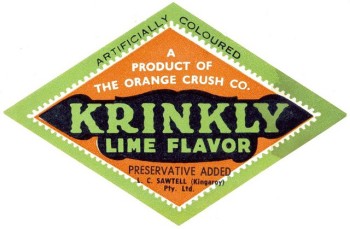Food labels are tricky business. There are lots of them out there and they can range from being useful to completely meaningless. To help break it down lets look at four categories.
CATEGORY 1: COMMON LABELS YOU SHOULD IGNORE
Free Range
Cage Free
Hormone-free
Antibiotic-free
Natural/All-Natural
Gluten Free
Paleo
These labels can be ignored because frankly, it is too complicated to ever know if what you think the label says is in fact true. FREE RANGE and CAGE FREE labels sometimes rely on technicalities to gain image. These animals might still live in large, crowded, factory farms in very little space. As long as they have theoretical access to outdoor space, which might be tiny with only limited accessibility, it counts as free range. Similarly, 100,000 chickens all living on top of each other in a barn could still be cage free. The image on the box of a chicken roaming free plucking away at earth-worms could be light-years from the truth.
HORMONE FREE and ANTIBIOTIC FREE can be equally misleading. According to the National Chicken Council no hormones are used on any chickens in the U.S., so the label is meaningless. Antibiotic free is equally uninformative because the label can be used on birds that did recieve anti-biotics but went through a withdrawal phase before slaughtering. Furthermore, some chemical treatments are not technically antibiotics and could be adminstered without affecting the antibiotic free label. Finally, the AARP claims that ‘antibiotic free’ is actually a label that was never approved by the FDA in the first place and therefore has no real regulatory meaning.
NATURAL means that no artificial colors or ingredients have been added, but that’s pretty broad. It only means that nothing was created synthetically in a lab. A spoonful of crude oil for example, would be an all natural dessert – yum.
GLUTEN FREE and PALEO are only important for those with a true gluten insensitivity or Celiac disease (or any other condition that a doctor has told you makes gluten off limits). If you don’t have a medical condition gluten is not the problem and paleo is only marketing.
CATEGORY 2: LOOK FOR AND POTENTIALLY ACT ON
Organic
Locally Grown
The good news with ORGANIC is that if it is labeled organic it did have to stand up to some actual scrutiny by the USDA. It should be relatively pesticide, anti-biotic, and hormone free. I say relatively because small amounts of each of those things may be present due to cross contamination or impurities along the production line. If you are in it for the environmental benefit be aware that a huge portion of the market is controlled by big industry in California. These companies might not be environmentally friendly overall. On the whole though, organic is usually better than any of the labels mentioned above.
LOCALLY GROWN is my top choice. However, local is not automatically clean food and/or environmentally friendly. A factory farm next door is, afterall, local. That being said, if you can find a reputable source for local such as a farmer’s market, CSA, or local vendor such as a butcher or fish monger they can help you. This, in my opinon, is the way to go.
CATEGORY 3: WON’T SEE OFTEN, BUT WHEN YOU DO, GO FOR IT
AWA – Animal Welfare Assured
GAP – Global Animal Partnership
Each of these are independent groups that as far as I can tell are reputable. If they have given an approval, you can feel pretty confident that you would be happy with where your food came from.
CATEGORY 4: ANYTHING ELSE
Any other label you see you can either investigate yourself (because some are legit) or simply reject. Many, many, many labels are just marketing. They hope to get your attention, sound good, and make you think “this sounds like a good thing, so I’ll take this one.”
CONCLUSION
If nothing else, I hope you take away what an absolute jungle this is. It is very difficult to truly know the value of a label. Therefore, I say the best bet is to avoid labels by purchasing whole fruits and vegetables from local sources that you trust. Investigate farmer’s markets, local vendors, and CSA’s in your area. Once identified, they can save you a whole lot of mental energy!
RESOURCES
Lymbery, Philip; Oakeshott, Isabel. Farmageddon. London; Bloomsbury Publishing, 2014
http://blog.aarp.org/2012/07/12/antibiotic-free-meat-what-the-label-isnt-telling-you/
http://www.foodandwaterwatch.org/food/consumer-labels/labels-that-tell-you-a-little/
http://consumerist.com/2012/8/30/why-antibiotic-free-meat-doesnt-mean-what-you-think-it-does/
http://foodtank.com/news/2015/01/ten-things-you-didnt-know-about-food-labels
http://www.greenerchoices.org/eco-labels/reportChickenLabels.cfm
http://www.nationalchickencouncil.org/about-the-industry/chickopedia/
